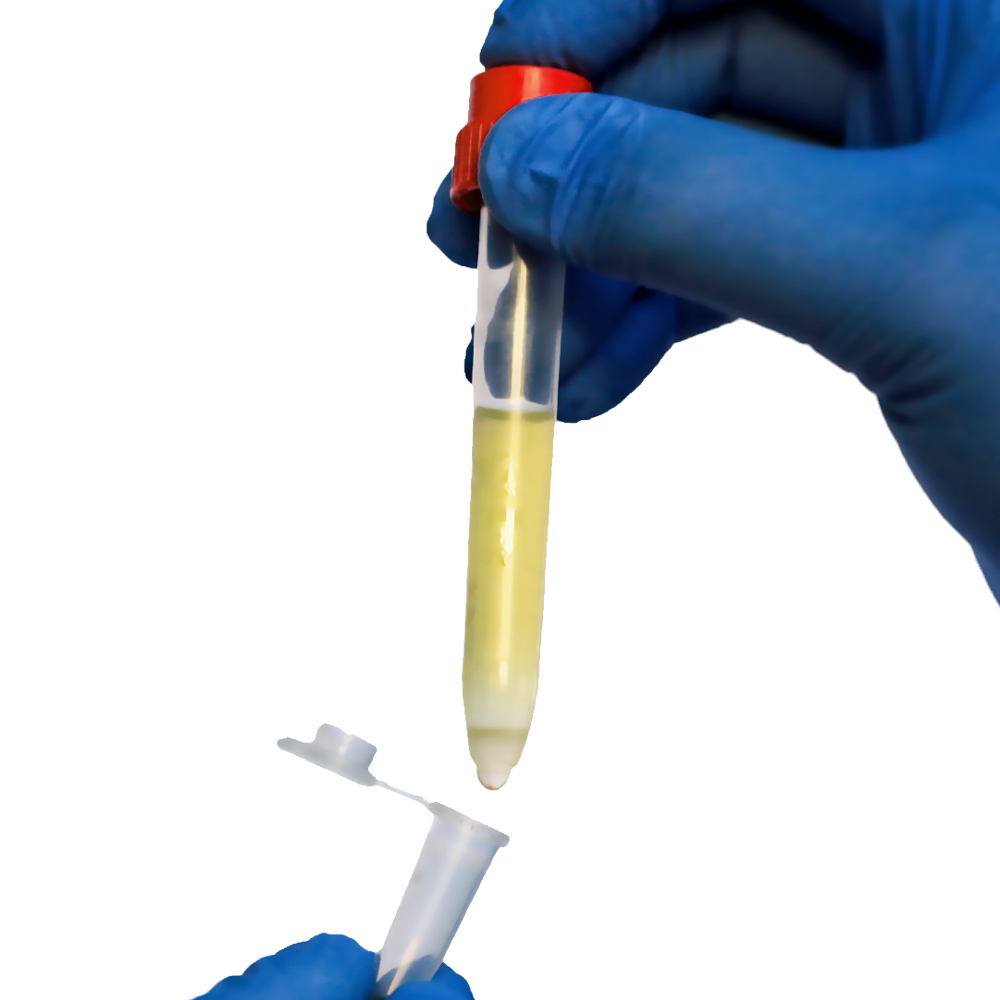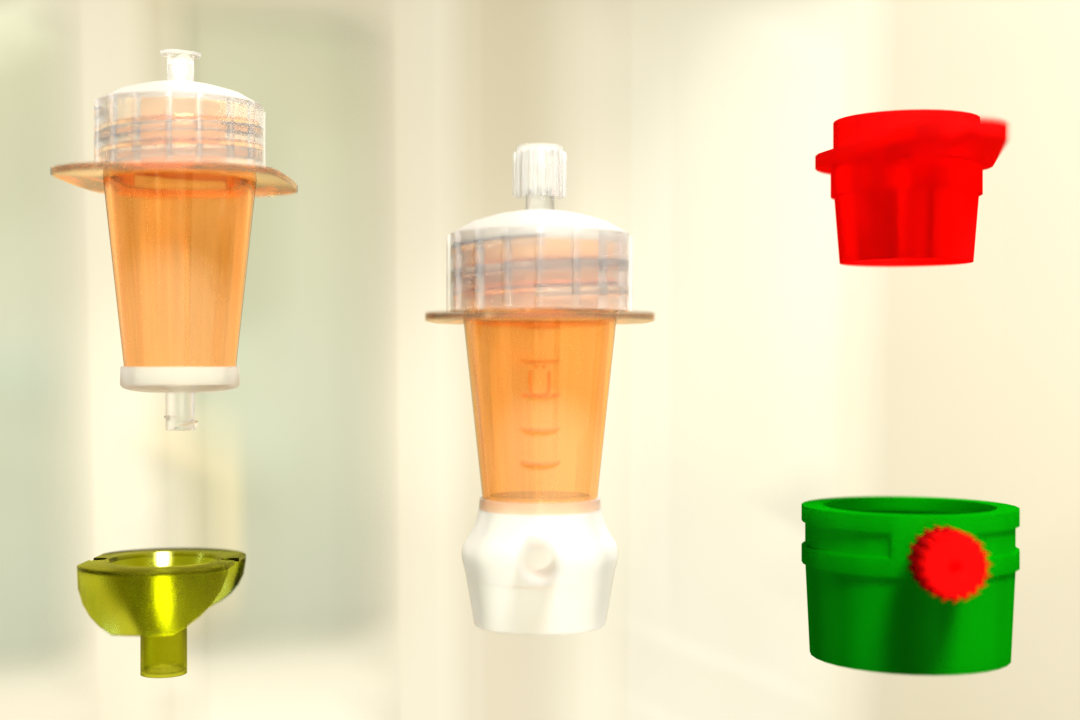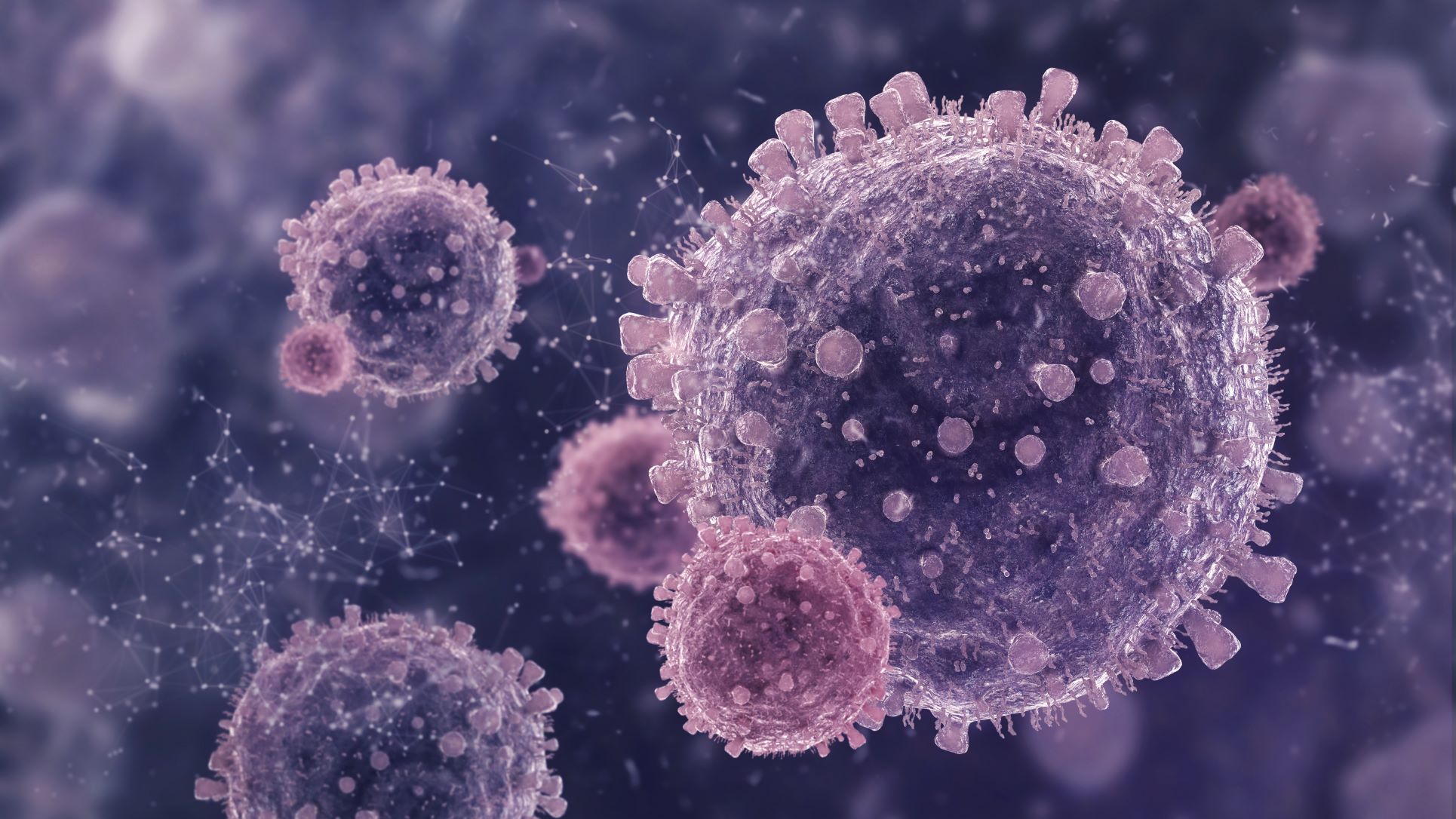In modern laboratories, efficiency and accuracy go hand in hand—especially when handling small-volume samples. From clinical diagnostics to research in cell biology, even a minor sample loss or contamination can disrupt entire experiments. That’s where Lab Cell Strainers play an essential role. These simple yet powerful devices help separate cells from debris, enabling cleaner, more precise samples for downstream applications.
However, when it comes to filtering smaller sample volumes, traditional strainers often pose challenges. Manual handling, high sample loss, and the need for centrifugation make the process more tedious than it should be. The Mini-Strainer-Aid was designed to change that. Specifically developed for use with the pluriSelect Mini-Strainer family, it offers a straightforward, reliable, and efficient way to perform small-volume filtration—without the need for centrifugation.
Compact, airtight, and user-friendly, the Mini-Strainer-Aid simplifies step-by-step handling and ensures consistency in cell enrichment techniques. In this article, we’ll explore the top benefits of using the Mini-Strainer-Aid, how it enhances workflow efficiency, and why it’s quickly becoming one of the best Lab Cell Strainers for researchers and laboratories dealing with small samples.
1. Simplifying Small Volume Filtration
Handling small samples is often more challenging than working with larger volumes. Every drop matters, and maintaining sample integrity throughout the process is critical. Traditional filtration setups can make this tricky—requiring multiple tools, transfers, and centrifugation steps that increase the risk of error or sample loss.
The Mini-Strainer-Aid solves this by integrating smoothly with the Mini-Strainer family, allowing precise control over the filtration process. The perforated elastomer top fits tightly onto the Mini-Strainer, creating a secure, airtight seal. Researchers can simply attach a standard 1–5 ml pipette tip to the opening and proceed with filtration—no extra tools, no unnecessary transfers.
This setup not only saves time but also reduces potential contamination points. By minimizing the number of handling steps, laboratories can achieve cleaner, more reliable samples. The design allows filtration to take place directly within the strainer setup, turning what was once a multi-step process into a single, fluid motion.
2. No Centrifugation Required
Centrifugation has traditionally been used to separate particles or cells in small-volume workflows. While effective, it is also time-consuming, requires specialized equipment, and can subject delicate cells to unnecessary mechanical stress.
The Mini-Strainer-Aid eliminates this need entirely. Its secure, high-friction seal between the pipette tip, elastomer aid, and Mini-Strainer allows gentle, controlled pressure during pipetting. Researchers can perform precise step-by-step filtration, effectively removing unwanted particles or debris without applying centrifugal force.
This innovation is particularly beneficial for cell enrichment techniques involving fragile or sensitive cells—such as stem cells or primary cell cultures. These cells can lose viability when exposed to the high forces generated during centrifugation. The Mini-Strainer-Aid enables a softer, more natural filtration method that preserves cell health and morphology.
By removing centrifugation from the workflow, labs can also free up valuable equipment time, reduce maintenance costs, and speed up routine sample preparation.
3. Enhanced Handling Precision
Precision in sample handling directly influences data reliability. In small-volume work, even minor variations in technique can lead to inconsistent results. The Mini-Strainer-Aid is designed to provide superior control and consistency in every filtration step.
The elastomer material and its specially textured surface generate high friction between the pipette, the aid, and the strainer. This ensures a stable, non-slip connection during pipetting. Researchers can apply pressure gradually, regulating the flow rate and ensuring that filtration proceeds evenly.
This kind of precision is especially valuable for applications where reproducibility is key, such as comparative experiments, multi-sample analyses, or cascade straining setups. When combined with Mini-Strainers of varying mesh sizes, the Mini-Strainer-Aid enables sequential filtration with consistent, repeatable performance.
This consistency not only saves time but also enhances experimental reliability, giving scientists greater confidence in their results.
4. Minimizing Sample Loss
Sample loss is one of the most frustrating issues in small-volume workflows. When working with limited or rare samples—like patient-derived biopsies or specialized cell lines—every microliter counts. Traditional strainers and pipetting methods often lead to waste due to spills, splashes, or material left behind in intermediate containers.
The Mini-Strainer-Aid tackles this problem with a direct, closed connection between the pipette tip and the Mini-Strainer. By forming an airtight seal, it prevents leakage or spillage during filtration. This direct flow pathway ensures that nearly all of the sample passes through the strainer efficiently, minimizing waste.
Additionally, because filtration is performed directly using the pipette, there’s no need to transfer samples between multiple devices—a step that often contributes to material loss. The result is higher sample recovery, more consistent yields, and cleaner results across experiments.
5. Reducing Contamination Risks
Cross-contamination is a constant concern in cell separation and enrichment workflows. The more open and manual the process, the higher the chance of unwanted particles, microorganisms, or chemicals entering the sample.
The airtight design of the Mini-Strainer-Aid minimizes these risks by maintaining a closed system during filtration. Once the pipette tip is inserted into the elastomer opening, the setup becomes effectively sealed, preventing external contaminants from entering.
This makes the Mini-Strainer-Aid particularly suitable for sterile environments or workflows requiring high sample purity, such as molecular diagnostics or immunology studies. Its compatibility with sterile Mini-Strainers ensures that the entire filtration process remains clean and contamination-free.
By simplifying handling and reducing exposure points, laboratories can maintain high-quality standards without needing specialized cleanroom setups for every filtration task.
6. Perfect for Cascade Straining Applications
In research and analytical labs, cascade straining—the sequential filtration of a sample through multiple mesh sizes—is a common technique. It allows researchers to separate particles or cells based on size with precision, improving the quality of cell enrichment and downstream analysis.
The Mini-Strainer-Aid integrates perfectly into this process. Its tight fit and stable handling make it easy to work with multiple strainers in succession. Researchers can start with a coarser mesh to remove large debris, then proceed with finer strainers to capture smaller cells or particles, all while maintaining control over the sample.
Because no centrifugation or transfer is required, the process becomes faster and gentler. This is particularly advantageous when working with cell suspensions where maintaining viability and morphology is crucial. The Mini-Strainer-Aid turns complex, multi-step cascade straining into an efficient, streamlined operation.
7. Supporting Modern Cell Enrichment Techniques
Cell enrichment techniques are used across disciplines—from immunology and oncology to regenerative medicine. These methods depend heavily on the quality of the initial sample preparation. If debris, damaged cells, or particulates are not effectively removed during filtration, the downstream data can be compromised.
The Mini-Strainer-Aid enhances the filtration stage of cell enrichment by enabling controlled, debris-free separation even with very small samples. Its compatibility with Mini-Strainers of different mesh sizes allows researchers to tailor the setup based on cell type and desired purity.
Whether preparing samples for flow cytometry, microscopy, or culture expansion, researchers can rely on the Mini-Strainer-Aid for uniform, clean suspensions. By maintaining cell integrity and reducing sample loss, it directly contributes to the overall success of enrichment workflows.
8. Boosting Workflow Efficiency
Efficiency in the lab is about more than just speed—it’s about doing more with fewer steps. The Mini-Strainer-Aid was designed with this philosophy in mind.
By combining precise pipette control, airtight sealing, and elimination of centrifugation, the Mini-Strainer-Aid reduces total processing time significantly. Researchers no longer need to pause between filtration and transfer steps or clean multiple pieces of equipment between samples.
This time-saving advantage becomes even more noticeable in high-throughput environments, where dozens of small-volume samples are processed daily. By using Mini-Strainers with the Mini-Strainer-Aid, labs can filter samples faster and with greater consistency—leading to higher throughput without sacrificing quality.
Moreover, reduced equipment usage translates to fewer maintenance needs and lower operational costs, further enhancing the product’s value in busy research facilities.
9. Compatibility and Ease of Use
One of the biggest strengths of the Mini-Strainer-Aid lies in its simplicity and versatility. It is compatible with all Mini-Strainers from the pluriSelect family, which are available in various mesh sizes suitable for diverse research needs.
The design accommodates standard 1–5 ml pipette tips, meaning no specialized tools or adapters are required. This plug-and-play approach allows any laboratory—whether academic, clinical, or industrial—to integrate it effortlessly into existing workflows.
The airtight, friction-based connection ensures a secure fit without needing clamps or screws. Even new users can perform precise filtration confidently, with minimal training or supervision. This intuitive design supports consistent results across multiple operators, a major benefit for large research teams and shared laboratory facilities.
10. Cost-Effective and Sustainable Laboratory Practice
Laboratories today are under increasing pressure to balance efficiency with sustainability. Equipment that reduces waste, lowers operational costs, and minimizes maintenance demands is highly valued.
The Mini-Strainer-Aid contributes to this goal by being a durable, reusable accessory compatible with disposable Mini-Strainers. Since no centrifugation is required, it helps save energy and reduce wear on centrifuge equipment. The elimination of multiple intermediate containers also decreases plastic waste, aligning with sustainable lab practices.
Moreover, its cost-effectiveness makes it accessible to smaller labs or educational institutions that might not have access to high-end filtration systems. It provides professional-level performance at a fraction of the cost, offering a practical way to improve small-volume workflows without heavy investment.
Applications Beyond Cell Filtration
While designed primarily for biological filtration, the Mini-Strainer-Aid has versatile applications across various research and testing fields. It can be used for:
– Microbial analysis: Filtering bacterial suspensions or removing debris from culture media.
– Environmental testing: Filtering small-volume water or soil extract samples for particulate analysis.
– Pharmaceutical development: Clarifying solutions during formulation research.
– Food and beverage testing: Removing particulates before microbial or chemical analysis.
This wide usability makes the Mini-Strainer-Aid a valuable addition to virtually any laboratory dealing with small liquid volumes. Its reliability and ease of use translate seamlessly across disciplines.
Best Practices for Getting the Most Out of Mini-Strainer-Aid
To achieve the best results, users can follow a few simple tips:
1. Select the right mesh size: Choose a Mini-Strainer mesh suited to your target cell or particle size.
2. Work gently: Apply smooth, consistent pressure during pipetting to maintain cell integrity.
3. Pre-rinse the strainer: Briefly rinse with buffer or media to remove any manufacturing residues.
4. Use sterile conditions: For sensitive samples, work in a laminar flow hood and handle with sterile gloves.
6. Clean after use: If reusing, rinse the Mini-Strainer-Aid immediately to prevent residue buildup.
By following these steps, laboratories can maintain reproducibility, reduce contamination risks, and extend the product’s lifespan.
Frequently Asked Questions (FAQs) About the Mini-Strainer-Aid
1. What sample volumes is the Mini-Strainer-Aid suitable for?
The Mini-Strainer-Aid is specifically designed for small-volume filtration, typically between 1–5 ml per step. Its design allows precise step-by-step handling, making it ideal for precious samples, limited biopsies, or rare cell populations.
2. Which pipette types are compatible with the Mini-Strainer-Aid?
The Mini-Strainer-Aid is compatible with standard 1–5 ml pipette tips. Its perforated elastomer top ensures a tight, high-friction fit between the pipette, aid, and Mini-Strainer, allowing smooth and controlled filtration without spills.
3. Can the Mini-Strainer-Aid eliminate the need for centrifugation?
Yes. The stepwise filtration capability of the Mini-Strainer-Aid removes the necessity for centrifugation in many small-volume workflows, reducing processing time, equipment needs, and stress on delicate cells.
4. How does the Mini-Strainer-Aid support cascade straining?
When used alongside other Lab Cell Strainers, the Mini-Strainer-Aid facilitates sequential filtration through varying mesh sizes. This ensures optimal separation of debris and cells while maintaining sample integrity, a key aspect of modern cell enrichment techniques.
5. Is the Mini-Strainer-Aid reusable or single-use?
The device is designed for reliable, repeated use when properly cleaned and maintained, though sterility considerations may require disposable usage in certain applications. Always follow lab safety and sterilization protocols.
6. What types of samples can be processed with the Mini-Strainer-Aid?
It is suitable for various small-volume samples, including cell suspensions, biological fluids, and molecular prep samples. Its airtight design reduces sample loss and contamination risk, making it highly versatile.
7. How does the Mini-Strainer-Aid improve reproducibility?
The high-friction fit, airtight seal, and step-by-step operation ensure that each sample is handled consistently. This reduces variability between experiments, critical for labs relying on precise results for research or diagnostics.
Conclusion
The Mini-Strainer-Aid represents a smart, practical improvement in how laboratories approach small-volume filtration. Its airtight seal, precise handling control, and compatibility with standard pipette tips make it a reliable companion for the pluriSelect Mini-Strainer family.
By eliminating centrifugation, minimizing sample loss, and supporting techniques like cascade straining and cell enrichment, it helps researchers achieve faster, cleaner, and more consistent results. In combination with the best Lab Cell Strainers, it forms a complete system that simplifies complex workflows without compromising data quality.
For research teams handling small sample volumes—whether in diagnostics, molecular biology, or environmental analysis—the Mini-Strainer-Aid is more than just a filtration accessory. It’s an efficiency booster, a contamination safeguard, and a time-saver rolled into one. In today’s fast-paced research environment, tools like this aren’t just helpful—they’re essential.
 English
English French
French
 German
German
 Spanish
Spanish
 Belgium
Belgium
 Italian
Italian Brazil
Brazil Chinese Mandarin
Chinese Mandarin




